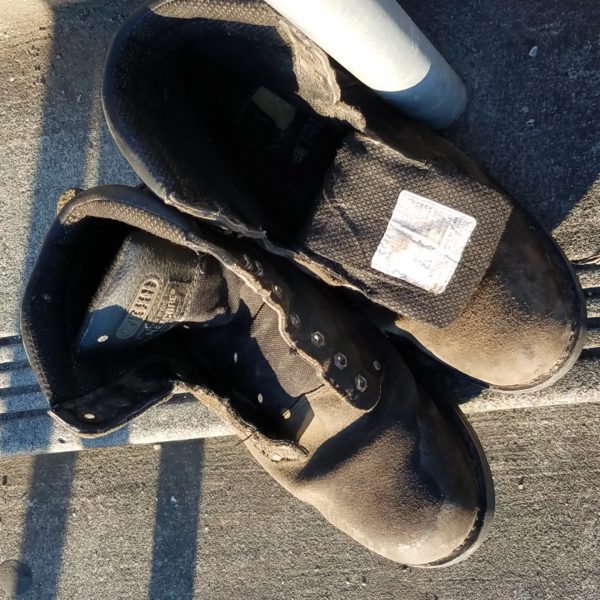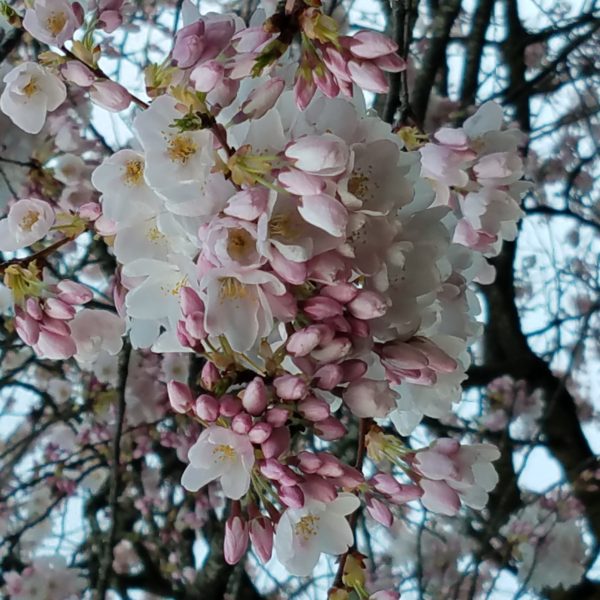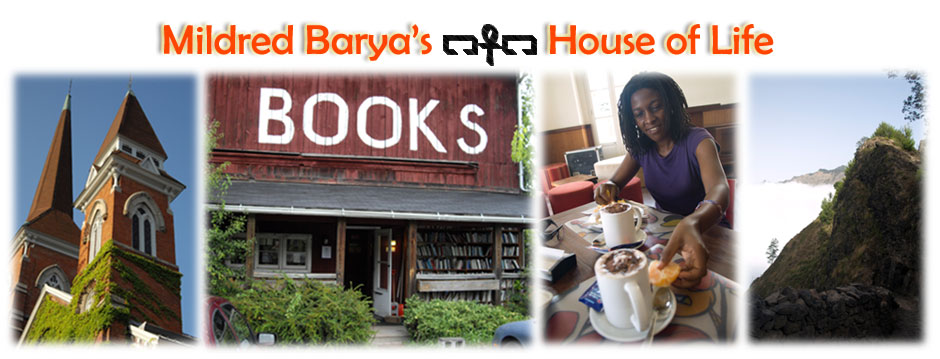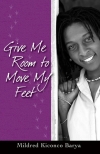
Since my arrival in Portland a few days ago, I’ve been struck by the number of shoes—pairs or singles—
left abandoned on sidewalks, parks or roadside. Mostly men’s, they vary in size, color, shape, and state of disrepair. Some are coated with dirt and mud, others spring clean, almost new. Only in city parks have I seen an equal distribution of men’s and women’s shoes lying about in different positions.
Women’s deserted shoes make me think of plight, predators, and the need to get away quickly. I have not conjured an image of excitement devoid of risk. Yet I know that every story is two stories and then some, so here’s my concoction:
Prior to coming to Portland, I was rethinking my long Alphabet poem, which is basically inspired by the first thoughts and feelings that appeal to my imagination when zeroing in on a particular letter of the alphabet. I write these perceptions down in what becomes a stanza or several sentences prompted by each letter.
Letter A had already given me insights associated with words like Awake, Alert, Allow, Affection, Adore, Alive, Attend, Abundant Abandon. I was recalling the jolly atmosphere of these words when suddenly my eyes fell on a rugged shoe all alone by the sidewalk. The contrast with what was going on within me was staggering, to say the least. I decided to give the shoe undivided attention. For more context, I need to add that I had just walked through a tunnel of cherry blossom trees in their manifold pinkness along the waterfront on my way to the Convention Center. Sparkling white clouds were doing their dance in the sky, moving every which way, while the sun patted me softly on the shoulders, and the water refracted its light. The word “shimmering” dropped in my mind for S. There I was taking the Alphabet on a walk, entering a moment of peace and positive essence, gratitude welling up and slowing me down considerably. Unhurried, but also knowing fully well that I wanted to attend one of the panels on Intersectional Writing that would be happening in a few minutes. If I dilly-dallied, I would miss it. But the manner in which that shoe looked at me made me pause, then stop, completely.

Afterwards, I started to notice other shoes, some lying in strange positions and facing different directions. The shoes conveyed an unspoken clarity that however needy one might be when chancing upon them, they must not be, they cannot be taken away, reused, or repossessed. I don’t think somebody else’s sweat, size, or mud have anything to do with why these shoes remain where they’re cast. Clothes can contain sweat and mud and vary in size, yet they’re sometimes carried away to be reused or repurposed. I know a few people who will not shy away from taking home a found T-shirt, skirt, or sweater. I think that the shoes in their abandonment attain a status bordering on the sublime. Only to be seen and not touched. That’s when letter A switched and smelled of Acute Abandonment. To be image precise—a shoe that’s kicked off and left alone on the sidewalk/roadside/in a park.
I’ve wondered about what might compel anyone to forsake one and not both, although sometimes it’s a pair. I wish I could talk to someone who’s ever left behind a shoe or pair in order to know what may have triggered the action. But then, knowing an individual’s exact answer may not satisfy my curiosity. Rather, I could allow the abandoned shoe(s) to give me their views:
-
In one scenario, the wearer bends, sits, and takes off the shoes carefully. He examines his sore toes—bluish-black—and tired feet, then decides to walk the rest of the way barefoot. He limps and staggers but is somewhat relieved that his feet are no longer burdened by the shoes.
-
The wearer, after a long trip, casts off his dirty shoes, opens his backpack to retrieve a new pair he’s been carrying and puts that on for the rest of the journey.
-
An irresistible impulse grips this person to kick off a shoe and walk the rest of the way with just one shoe.
- In this version, the wearer has not a single blister. In fact, his shoes fit comfortably. He has a loving wife at home with an online business, and he enjoys his own job which comes with flex time. His body weight is a source of pleasure, he has no diabetes, he’s not on prescriptions, has never lost a relative to cancer, and three times a week he does CrossFit which he thoroughly relishes. Glistening sweat, fast pumping heart, lungs truly wondrous, his 46thbirthday is coming up soon. In short, he’s quite happy. But he has never done anything crazy in his life!
Running down the stairs—he’s previously done so a couple of times as part of his physical training—he becomes aware of a new sense of freedom. He feels the urge to take off a shoe and throw it further down the park, let it land wherever it wants. He laughs at the idea, incongruous! He was raised by responsible parents but now he’s charged with outrageous joy and he obeys. He flexes his foot, feels really good about it. Who knew a foot could be so liberated? What’s more, his act of resistance (to the norm) on the one hand, also signifies pure allowing (of total freedom) on the other hand. Later, far from the stairs, it occurs to him, why not liberate both feet? His wife will get a kick out of it, he can’t wait to see the expression on her face when he enters the doorway, socks still on? No, he’ll just keep one sock on, and one foot completely bare…
I’ll leave you with a pair of hiking boots. Size 12. My last encounter up the stairs. It’s too late for intersectional writing, or perhaps, I’m already in it. Who cares?






No comments yet.